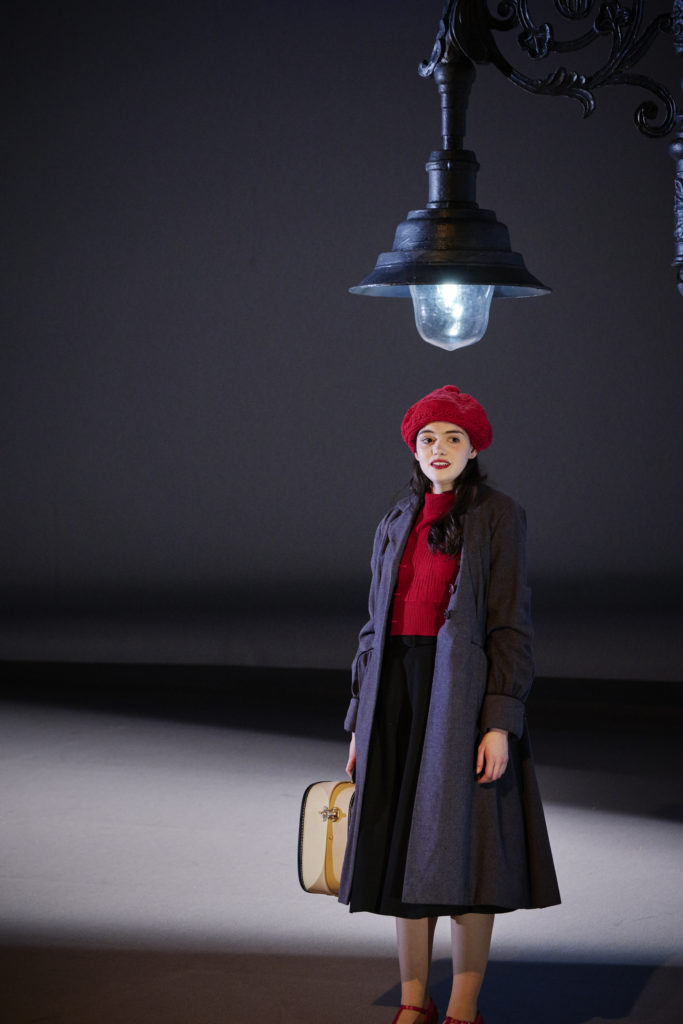Anne O’Leary finds the stage adaptation largely faithful to Edna O’Brien’s original

Photo Ros Kavanagh
There is an element of poetic justice in the choice of Edna O’Brien’s Country Girls Trilogy as the prestigious One City One Book 2019, that great initiative by Dublin City Council that annually encourages everyone to read a book connected with the capital city. When The Country Girls, the first book in the trilogy, was published in 1960 it was banned under Ireland’s cruel censorship laws. The book recounts the antics of Cait and Baba who resist the values instilled into them in the restrictive convent school and the Catholic homes in which they are raised, while providing a portrait of two families, contrasting in their circumstances. It is a deceptively simple tale that, according to O’Brien, ‘wrote itself in the space of three weeks’. We find it harmless 60 years on but when it was first published, the protagonists’ sexuality and irreverence were considered a risk to public morality. O’Brien was immediately accused of bringing shame on Irish women. She was condemned at parish Masses and her local priest organised a burning of her books. In various interviews since the acknowledgement of the book as a classic, O’Brien appears to be both hurt and incredulous at the amount of abuse initially hurtled at her: ‘I was amazed at how frightened people were of the truthful written word’.

Photo Ros Kavanagh
The uproar caused by the book overshadowed the importance of an Irish writer expressing the true nature of Catholic rural Ireland and giving an unflinching portrait of Irish women’s lives. Previous women wrote either from the Big House tradition—Maria Edgeworth, Elizabeth Bowen, Somerville and Ross—or from the Catholic bourgeoisie like Kate O’Brien.
There was much anticipation of this year’s widely revised stage version for the Abbey Theatre and subsequent countrywide tour, and O’Brien’s involvement in the production insured it was transferred relatively faithfully to the stage. Directed by Graham McLaren and adapted by O’Brien herself, her rather haunting voice provides the voiceover. It is a stylish production with slightly expressionistic features working very well within it. There are several movement scenes where the full cast, under Vicki Manderson’s impressive choreography move and dance in groups (usually around the main characters played by Grace Collender and Lola Petticrew). This sometimes raucous crowd is similar to the Chorus in a Greek Tragedy who comment from the margins of the action, or in this case convey communal disapproval. The performance is further enriched by music composed specifically for this production.

Photo Ros Kavanagh 
Photo Ros Kavanagh
There is no interval in the play, which lasts just over an hour and a half—a feature becoming popular now in Dublin theatre—and this helps the flow and builds up suspense. In this production the props and furniture hang from wires above the stage and are lowered as needed. This innovation further helps the fluidity as there are no interruptions for scene changes.
As with all adaptions, the shorter time span and necessary condensing of theatre allows for only a selection of scenes from the book to be dramatised. It becomes very much a drama about Kate and we hardly think about the other characters, which is a pity, especially Baba who is introduced as ‘my best friend and the person I feared most, apart from my father’. It is Baba’s irreverence and dissidence that gives the novel much of its energy. Instead, unnecessary time is given over to overblown lavish descriptions of flora and fauna. Another sacrifice is the absence of tension so deeply rooted in the writing from the very first sentence:
‘I wakened quickly and sat up in bed abruptly. It is only when I am anxious that I waken easily and for a minute I did not know why my heart was beating faster than usual. Then I remembered. The old reason. He had not come home.’
In fact the role of the father is downplayed in this production and Kate’s relationship with her mother is foregrounded instead. Played by Lisa Lambe, her singing, although impeccable, along with her ghostly presence slows down the action a bit too much. Also, the construct of the idealised mother figure jars with the vitality and rebellious nature of the story.
If the theatre has some unavoidable limitations, then it also has some strengths over and above the written word. The closing scene is a triumph. Dressed in her red high-heeled shoes (they are brown in the book), Kate walks defiantly and confidently towards the back of the huge empty stage, away from the audience and into her new life in London. She is not crushed or defeated as in the book but confident and defiant, having shaken off the constraints of the home, Church and rural society in which she grew up.
Anne O’Leary is a non-fiction writer who specialises in book and theatre reviews but also writes longer cultural analysis
First published in Books Ireland Jul/Aug 2019












